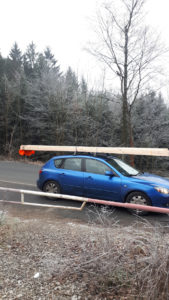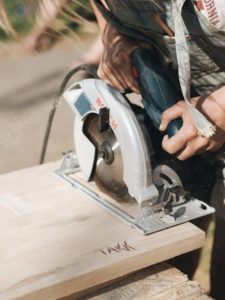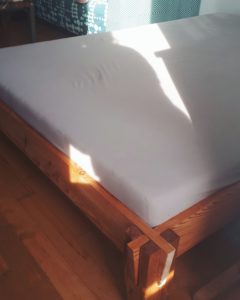Veronika Eisensteinová: I breathe new life into old trees
Veronika Eisensteinová is one of only a few women who work in carpentry. It was something of a chance experience that she started to work with wood. She was collaborating on a charity project which was dedicated to building playgrounds in the Banat region of Romania. Both the carpentry and Banat touched her heart so much that she decided to devote herself fully to the traditional craft – and also to help Czech people living in Romania. Veronika is currently successfully running her business, which is called ‘Takk’, which is based on an ‘intuitive’ kind of carpentry, producing personal and original pieces. In her workshop you will find only women, so every piece of wood work is created with femininity, spontaneity, and also with respect for nature and trees. These values are embedded in each piece of furniture. Fallen and old trees are revived, and new life breathed into them.
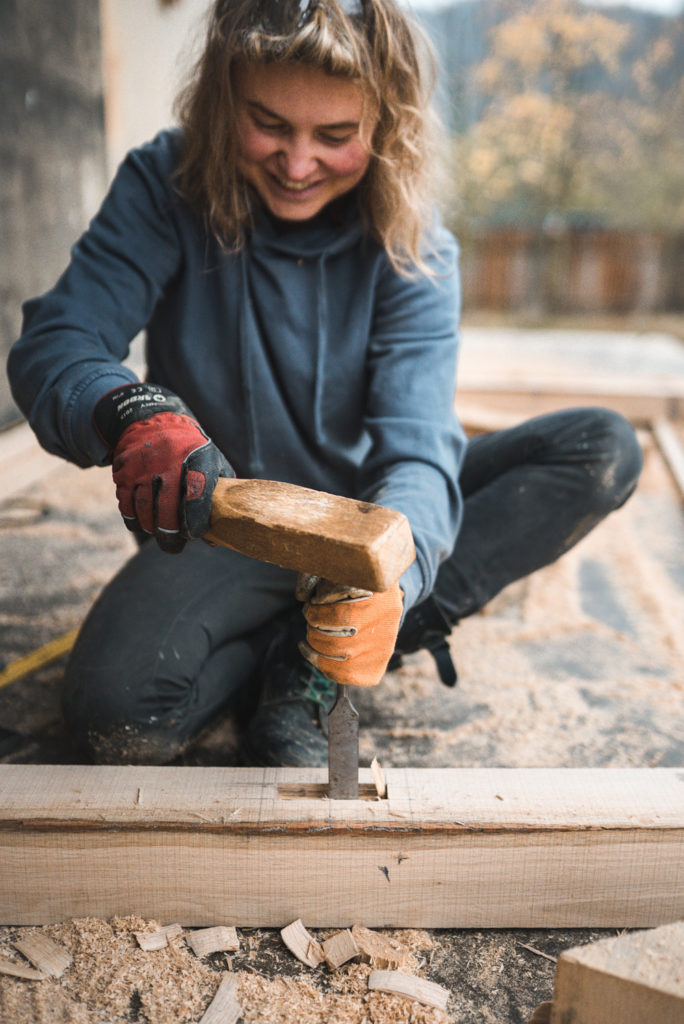
Veronika, it may sound like a classic stereotype, but your craft is not entirely typical for women. What brought you to the field of carpentry and carving?
It was by chance. While I was studying at university, my friend and I started organising various events for Czech children in Banat, Romania. One of the charity projects was the construction of a playground.
So, we found three sculptors who were engaged in the construction of playgrounds and they went to Banat with us. I continued to collaborate with these women, who also became my friends: Lenka Klodová, Helena Poláková and Lucie Nepasická. I have been working with them ever since.
Do you think of carpentry as a particularly difficult job for a woman or is it not that different from other professions?
I certainly believe that a woman’s physiology and body structure are not entirely suited for such work, especially when you have to lift heavy things. But what we cannot achieve by our own physical strength, we can do otherwise. For example, we can ask people who are willing to help or use a system of pulleys. However, I prefer to create simple furniture these days, such as beds, tables or coffee tables. These things don’t need to be lifted by jacks. And is it different from other professions? Every job has its own characteristics. It would certainly be much more difficult for me to have to sit all day, every day in an office at the computer.
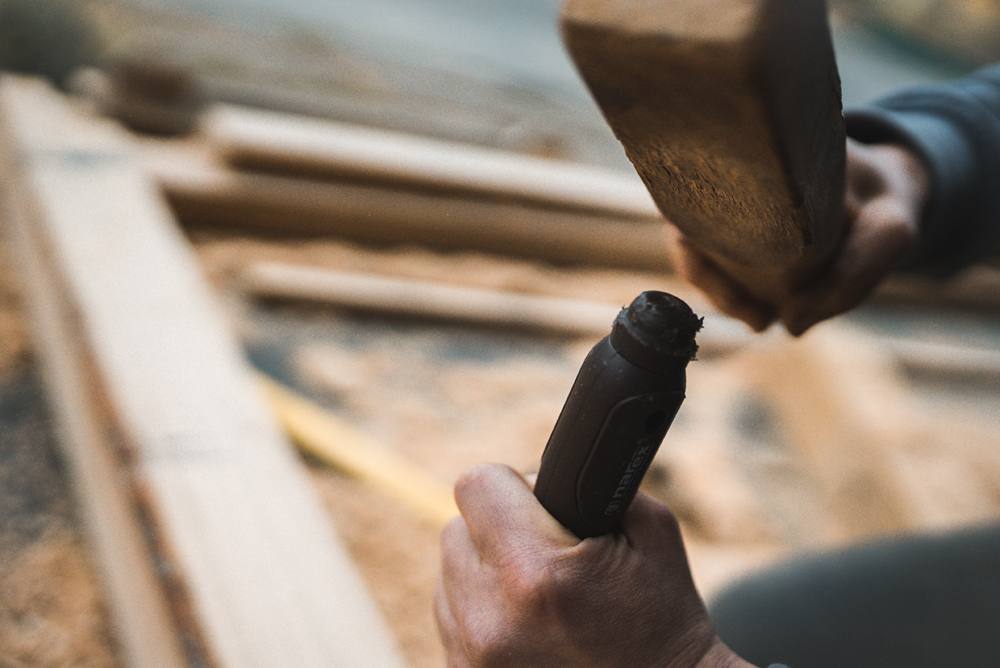
Did you meet other women who have chosen this craft while you were studying?
At the vocational school, I met three other women but in a class of 27 men. I don’t know if any of them continued with carpentry, except for Helena, who I have already mentioned, who was a year above me in school.
Is it true that there are only women in the workshop where you work?
That’s right. But sometimes a part-time male worker comes to us, for example, to cut up a trunk or to do other heavier work. But they are mostly the sons of the girls with whom we have a workshop.
Was it intended to be only women?
No, but to be honest, any guy couldn’t work with us too long! Only women. [Smile.] After all, as women we have our own style of work, our own systems, which do not always correspond with other technical procedures or traditions. We work more intuitively, it’s just our way.
Your portfolio is full of original and creative work with wood. Where do you draw inspiration from?
Most of the items happen by chance. I never know in advance what I will create. I don’t have a well-thought-out plan and I never know what the item will look like. So, maybe it’s not so much inspiration as intuition. For example, when someone orders a bed from me, we agree on the dimensions and approximate shape. I stick to that, but the rest comes during the process.
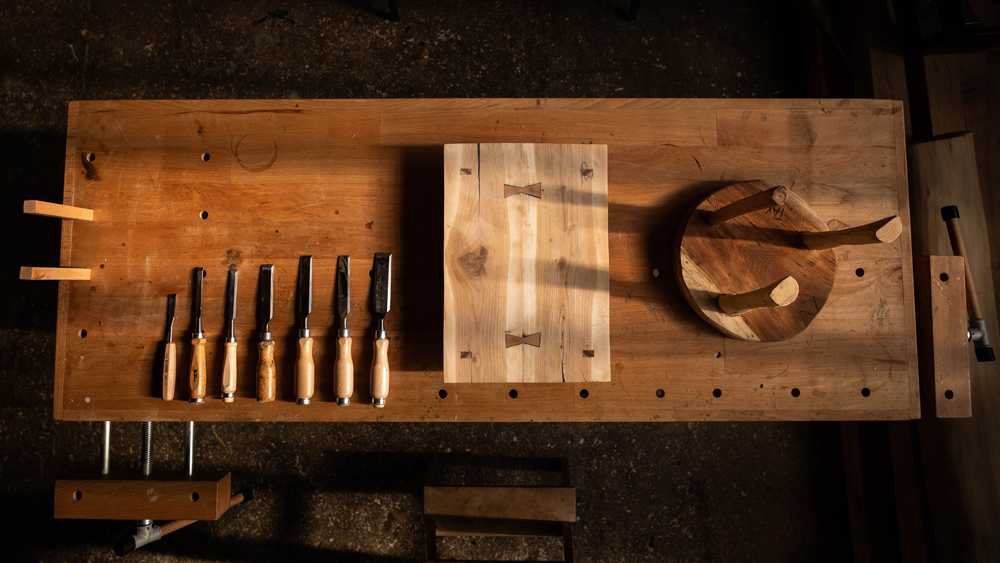
On your website, Takk.me, you say that you prefer to “breathe new life into old fallen trees”. How important is the perception of nature to you?
I work with natural materials. I realise that the wood I have in my hands has been growing somewhere for decades, experiencing winters, living many years and it would tell you some stories if it could. Also, often I have the feeling that each piece of wood already knows what it will be. I just “listen” to it.
Could you describe, for example, what your craftsmanship of a certain piece of furniture looks like? I mean from the very beginning, from that “fallen tree”. What does it take to carve a table or a bed?
Firstly, I go to the saw. This itself is often for some social research. [Smile.] The scenario often plays out like this: men from the sawmill come running from all directions to see a woman in a dress who wants to load something on the roof of her car that the car can’t cope with! The men joke that I’m “crazy” driving with such a huge piece of wood on top of my car.
Then we agree with the customer the dimensions for a particular piece of furniture and its use and form. A personal approach is important to me. As far as possible, I like to meet the customer face to face in advance. In the case of larger items, I like to be invited to the place where the furniture will be installed. In return, I need the client’s trust to give me a free hand. In some cases I know that my hands will be tied and I’ll be held back by an agreement – in that scenario the process won’t be very easy and I would rather reject the request.
Finally, I pick up the chainsaw, grinder, chisels and the crafting begins. Paradoxically, this is the easiest process. I close the door of my workshop and I do only what I do best.
Do you agree that it’s hard to find a good craftsperson today?
I totally agree. There are few craftspeople and not everyone is a master of their craft.
Why do you think that traditional crafts are often under-appreciated compared with other fields?
Traditional craftsmanship requires a lot of time, experience and established processes. But I think we understand them more and appreciate their meaning more now, and so we are rediscovering this craft. So I do not completely agree that it is an under-appreciated field.
How long have you been working in carpentry? Do you feel that today people are more interested in the craft and prefer buying items from “real” people who they can get to know personally than when you started out?
I have been working with wood for about six years. When I started, I wasn’t doing my own things, I was just in the learning process. But the fact that people care more about knowing the origin of the products today is true. Maybe it’s connected with some greater awareness among all of us. Nowadays, we are more informed; we know that there are people behind a creation and we are inquisitive about the conditions in which they work.

Is it possible to make a decent living from traditional crafts in the Czech Republic?
I think it would work in my case to make a living purely from craft. But there are also various activities that are connected with my job, such as marketing, social media and all the other related things. So, my work turns more into multitasking – I’m not so good at that yet, but I’m learning.
You also have a strong relationship with Banat, a Romanian region where there are Czech villages. When did you start visiting Banat?
I came to Banat for the first time about 10 years ago. In fact, I came across the place with a friend accidentally.
What about Banat appealed to you so much?
I think everything. Most of all, as you get closer to the hills where the villages are, it’s like going through a time warp. You get out of the car and feel like you’ve gone back 200 years.

Has anything fundamentally changed in Banat over the years?
Sure, a lot of things. For example, now there’s a mobile signal. When I went to Banat for the first time, there was none. Now, you can even connect to Wi-Fi in almost every other cottage. But it’s not an open-air museum, so from my point of view that’s ok.
How do you see tourism in Banat?
Tourism is a large part of the local economy. It is one of the things that allows locals to stay here and not have to move away, most often to the Czech Republic for work, as has been common in the past.
As far as I can see, interest from tourists is growing year by year. The Czech Banat Festival can certainly take a great deal of the credit for this, as it attracts people who would not otherwise have ventured so far. And the Banat region still has something special: once you see it, you have to return again and again.
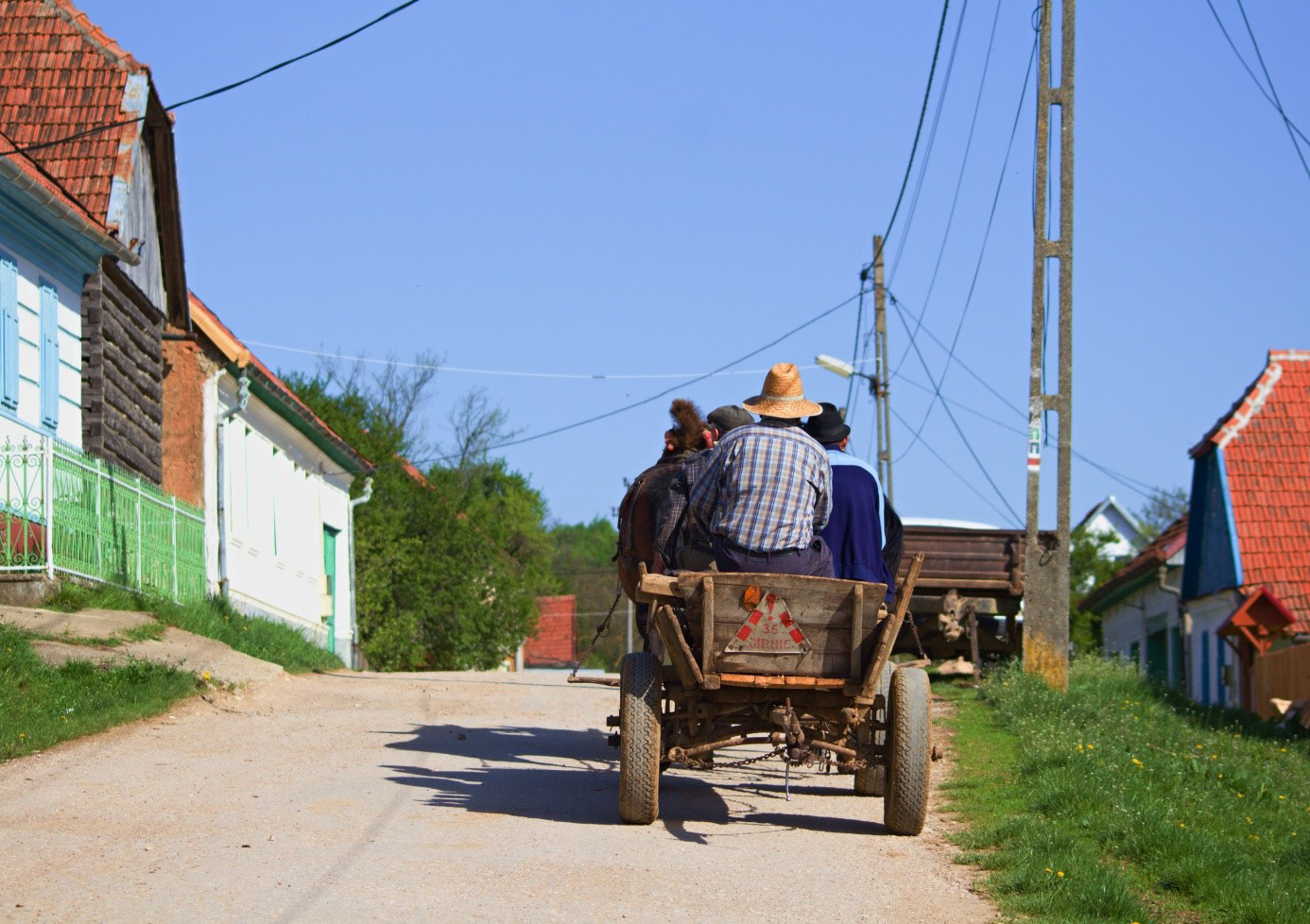
Did you use your skills and crafts in Banat?
Yes, during the construction of the playgrounds. It has already become a small tradition. Every village where there are young children has a playground built by us. This year we were supposed to go to Rovensko, to build playgrounds there too, but the current situation with the pandemic delayed this and we had to postpone it a year.
Is there any future carpentry project you would like to do?
I’ve always wanted to build a mountain hut and graze a flock of sheep. But now I am going to get married, so I am focusing more on the “human nest”.
What would you say to women who are discouraged by established stereotypes about “male and female” work, even if they would like to pursue carpentry?
Let the stereotypes go and listen to your inner voice and heart. For women this applies not only to work, but to the whole of life.
